Turkish cuisine has a lot of variations on the theme of meat, aubergine and tomato. And it’s to their credit – together they’re absolutely delicious. Always! Turkish moussaka, or musakka in Turkish, is one of my favourite dishes. I often make it for an extravagant, yet simple, weeknight dinner.
We all know about Greek moussaka. But, it’s not the only moussaka in town. Far from it.
In fact, moussaka is popular across the Eastern Mediterranean. Though it’s better to think of them as a family of dishes rather than versions of the same. Because they are quite different from each other indeed.
But first things first.
Where does moussaka come from?
The Greek variety may be more famous, but moussaka supposedly originated in Turkey.
During Ottoman times, the dish spread far and wide. From there, it developed into distinct varieties across the Middle East, Greece and the Balkans.
The common denominator for all moussaka is aubergine and tomato sauce. Sure, some local versions substitute potato or some other vegetable for the aubergine.
But for the most part, it’s all about the aubergine and tomato.
The well-known Greek version is of course an oven baked dish of layered meat sauce, aubergine or potato, and topped with bechamel sauce.
Lebanese moussaka, on the other hand, is a spiced aubergine and chickpea stew. Completely vegetarian and equally delicious as a warm main course as a cold meze.
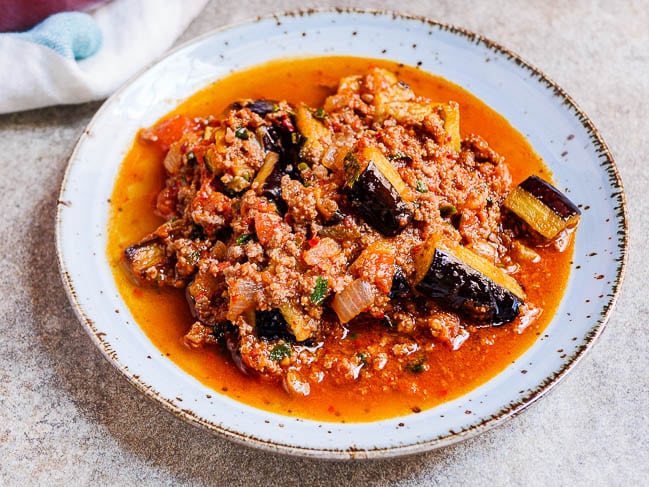
The Turkish version is closer to the Greek one, but simpler. A meat moussaka, it’s made of roughly equal parts minced meat, aubergine and tomato. I say roughly, as each cook will have their own views on the relative amounts here.
In many ways, Turkish moussaka is also a simpler stew version of another Turkish classic. Karniyarik, or meat stuffed aubergine, is among those dishes that awaken childhood memories among my Turkish friends.
How to make Turkish moussaka
There are probably as many ways to prepare the Turkish version of moussaka as there are (home) cooks in Turkey.
Most rely heavily on tomato paste, plenty of oil and a little water for the sauce. This works well in Turkey, where both tomato paste and oil of high quality can be easily acquired (though mass-produced less focused on quality are, sadly, becoming ever more prevalent here, too).
In this version, I use less oil and a mixture of tomato paste and chopped tomato. This gives a fresher taste, more suitable to the ingredients available outside Turkey (where tinned chopped tomatoes tend to be good, but tomato paste not so much).
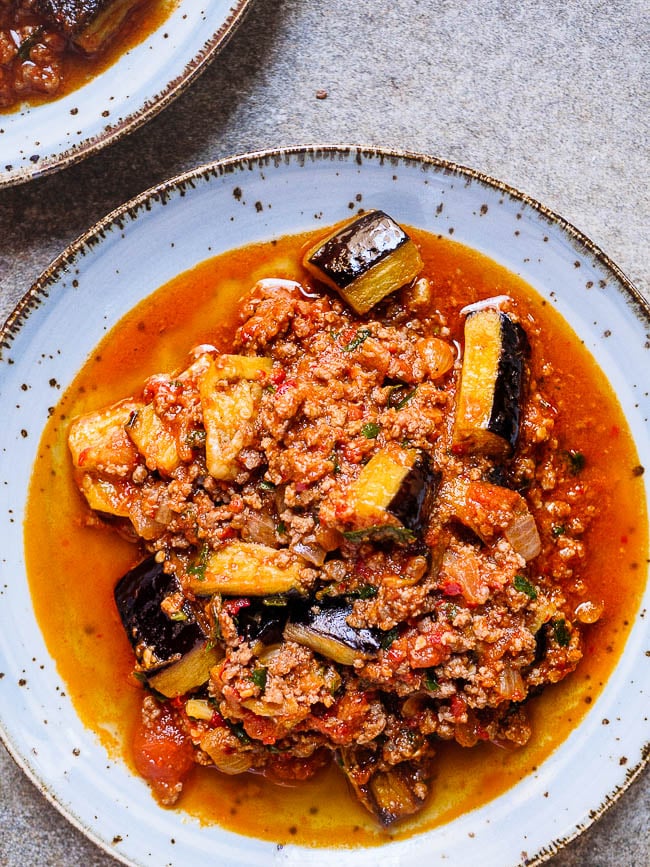
I like a bit of a chili kick, and have added both Turkish hot red pepper paste (acı biber salçası) and Aleppo pepper (or pul biber, if you’re Turkish). The spiciness of either can vary considerably, so use with care.
If you like, you can also make it completely mild, skipping the chili paste altogether and only adding as much Aleppo pepper as you’re comfortable with. If you can’t get hold of either both, you’ll still get a delicious dinner – though you’ll lose a lot of the flavour that makes the stew characteristically Turkish.
How to serve musakka
Turkish moussaka is best eaten like in Turkey, with a side of simple rice or bulgur pilaf. Turks also love their bread with musakka, as they do with virtually any meal. Great for mopping up the sauce, but for me, the rice or bulgur is enough carb.
A freshly chopped salad of seasonal vegetables is also great alongside. Nothing too complicated, just chopped vegetables and a few herbs dressed with lemon juice and olive oil.
Tip! Turkish moussaka is great for making in advance, but make sure to stir very carefully when re-heating. You don’t want to mash those cubes of aubergine! Better still, prepare all the way up until the point where the aubergines are added, store separately and finish the dish just before serving.
The recipe serves 2-3 with bulgur and rice and a generous bowl of fresh salad alongside.
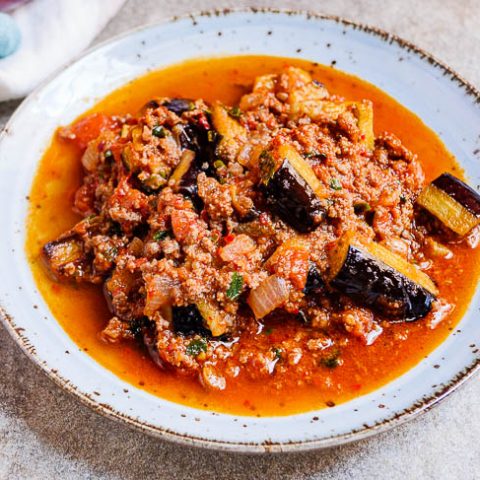
Turkish moussaka (Musakka)
Ingredients
- 6 Tbsp olive oil, I use a mild extra virgin, divided
- 400 g aubergine (eggplant), (c. 2 medium), partly peeled and cut into 3 cm cubes
- 1 onion, roughly chopped
- 2–3 Turkish green peppers, e.g. çarliston biber, chopped, or ½ green bell pepper, chopped
- 3 garlic cloves, finely chopped
- 400 g minced beef, or lamb, or a mixture
- 2 Tbsp tomato paste
- 1 Tbsp Turkish hot pepper paste (acı biber salçası), or 1 roasted and peeled red peppers, finely chopped
- 1 tsp sugar
- 400 g tomato, fresh or tinnes, chopped
- 2 tsp pul biber (Aleppo pepper), or to taste
- 1 small handful flat-leaf parsley, chopped
- water
- salt and pepper
How I make it
- Preheat the oven to
230 °C.
- Mix the aubergine cubes with 4 Tbsp olive oil and some salt and pepper. Place on a baking sheet. Roast until soft on the outside and golden on the outside, 20-25 minutes or more.
- Meanwhile, heat a thick bottomed frying pan over medium/high heat. Brown the meat in 1 Tbsp olive oil, chopping it up roughly as you go (it’s best if you leave some bits a little chunky). Set aside.
- Lower the heat to medium. Fry the onion and green pepper with a pinch of salt in the remaining 1 Tbsp olive oil (or as much as is needed) until soft but not browned, stirring regularly, 8-10 minutes.
- Add the garlic, tomato paste, pepper paste (or roast peppers) and sugar. Fry, stirring constantly, until very fragrant, a minute or two.
- Add the meat, tomatoes, pepper flakes and 200 ml/⅘ cups water. Mix well. Season to taste with salt and pepper. Bring to a boil, then lower the heat and leave to simmer until the tomatoes have broken down and the flavours are starting to set, at least 10-15 minutes.
- Carefully add the roast aubergine and flat-leaf parsley. Check again if you want to add more salt, pepper or pepper flakes. Continue to simmer until most of the water has evaporated, 5-15 minutes (it should be thicker than on the photo). Don’t stir too much, or you’ll mash the aubergines. Serve hot.


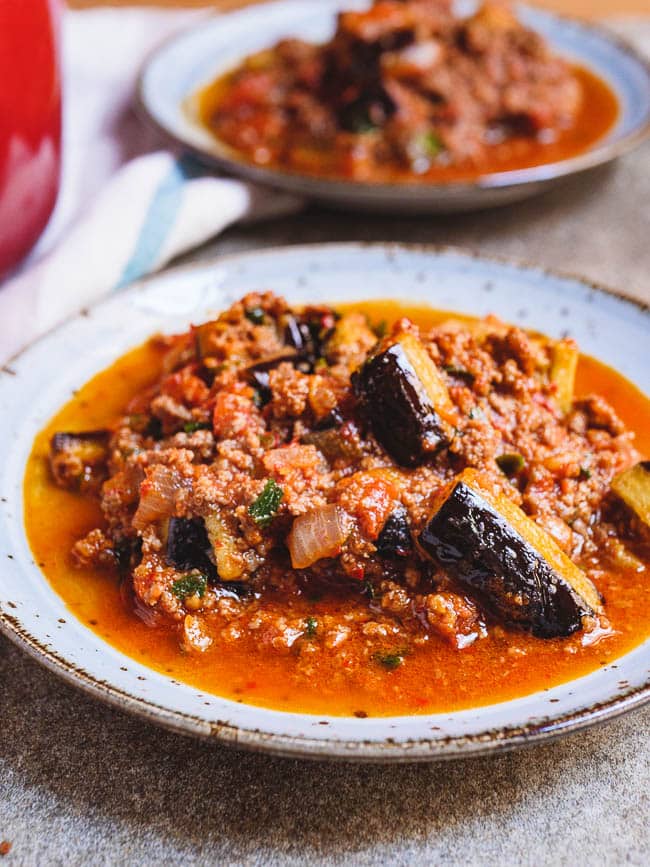


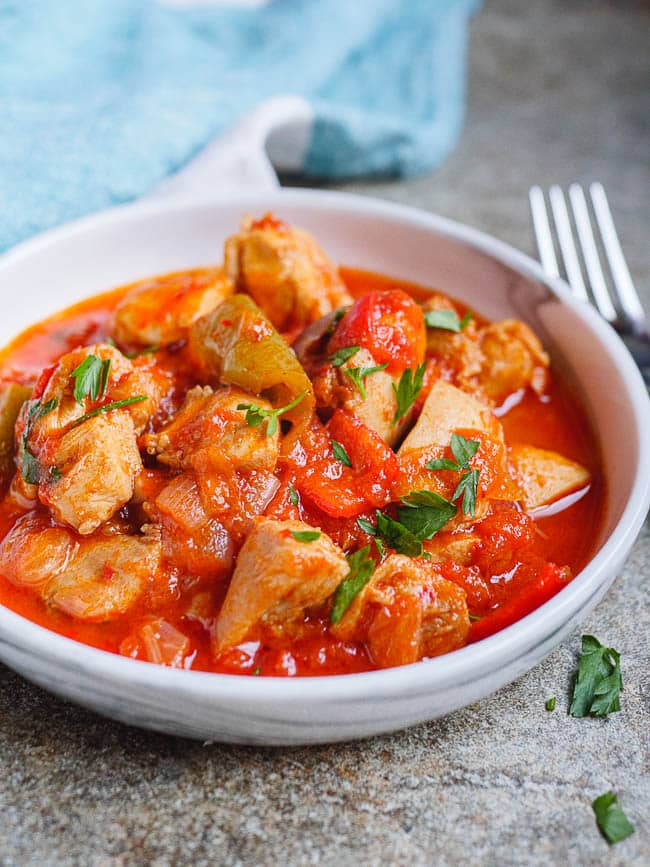

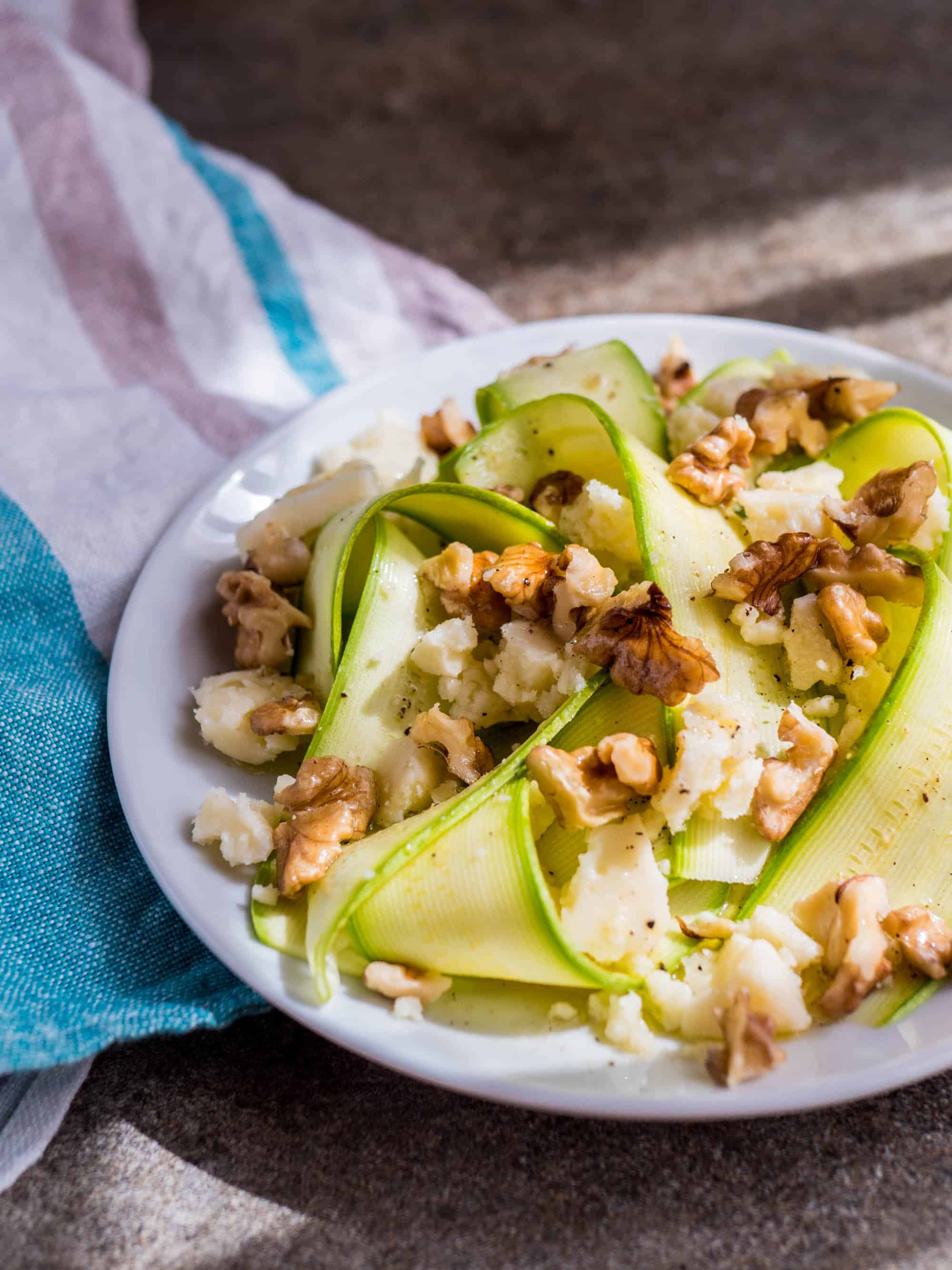
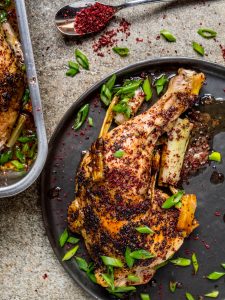
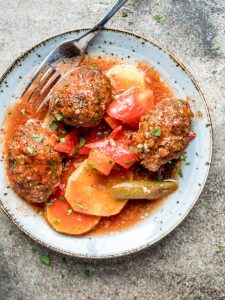
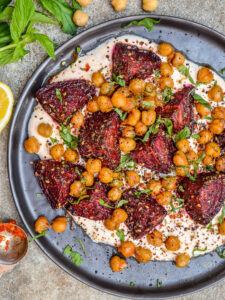




28 responses
Thanks. It was delicious.
This recipe is delicious, it’s in my weekly rotation and I’ve cooked it dozens of times by now. Thank you for sharing it with us!
Delicious! Thanks for letting me share your recipe, will use again and again 😁
Made this a few times now and thought it was about time I commented.
Thanks for sharing, I’m a massive fan of Turkish food, and your recipes, this recipe in particular is a firm favourite with friends and family. I’ve used it with courgettes when I’ve had a glut from the garden. It freezes very well, so I always make a double batch. I’m lucky to be able to get aci biber salçası and Turkish tomato paste from a local store. It’s absolutely delicious with fresh homemade bazlama or rice. Also hubby likes it topped with crumbled feta. Just yum!
How wonderful to hear, thanks so much for sharing! Made my day, and many good suggestions there!
Yummmy.
Have made this 3 times now. Great recipe that the whole family enjoys. I use more garlic and less chilli.
I followed your recipe completely, and I was surprised that my Turkish husband and our teenage sons loved it. They had complained that my Turkish cooking was no match for their paternal Grandma. They were right! But they dared to ask me why I didn’t make enough for a second meal! I don’t recall her ever making this dish. We will have it again soon!
How wonderful to hear! Thanks for sharing.
I made this recipe twice already. It was delicious. I used ground plant based meat instead of ground beef. I love that this traditional recipe can be a vegan meal with that one modification.
This is always delicious. I have made double to freeze in smaller batches for when I’m home alone so I don’t have to cook. Reminds me of my time in Turkey and we enjoy this every time. Next will be the lamb stew.
I never made moussaka as I am not a huge fan of it, but I thought I give it a go and made it today, and my daughter who is not a meat fan, even she loved it. I find the idea of roasting the eggplants first makes this dish really tasty. Thank you so much 🙂
Best version of Turkish musakka ever!!!!!
Looks good and delicious and not that difficult to scramble even during the week night, so I will give it a go! And thanks for the newsletter!
Hi, quick question: step one, when it says some seasoning….what seasoning are you referring to?
Salt and pepper
How many people does this recipe serve?
What a lovely recipe!!!! Can i serve this delicious Moussaka dish with brown rice spaghetti??? If you can let me know…. thanks
Yes, that should work well.
Trying this now! Three Questions: 1. Do you add any other seasoning to the meat? 2. How did you keep your eggplant from sticking to the sheet/foil? Do you know if this freezes well?
Thank you so much for sharing this recipe!
1. Just what it says in the recipe. 2. You can use baking parchment, but I find this is rarely a problem anyway. I never use foil. I’m afraid I never tried freezing it.
Hope you enjoyed it!
You should try the Persian/Iranian version of this although we don’t call it moussaka but Khoresht (stew) bademjan (eggplant). You can find the recipe here (not my site). https://turmericsaffron.blogspot.com/2009/03/eggplant-stew-khoresh-bademjan.html
Thanks for the tip! I’ll check it out 🙂
This recipe sounds delicious must try I normally have the Greek version
Amazing recipe ! Tried it once and everybody in the house loved it, thank you for sharing!
Thank you Elena, glad to hear you enjoyed it! 🙂
Thank you for sharing this recipe! I’m Turkish although I actually prefer the Greek version and always make it that way – but the world would be too boring if we all thought the same way 🙂
Hehe, to each his own I guess. I’d take the Turkish one any day – but I won’t say no to the Greek variety either 😉